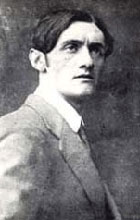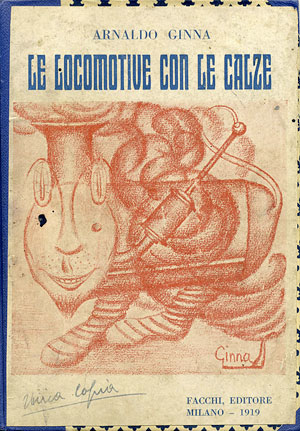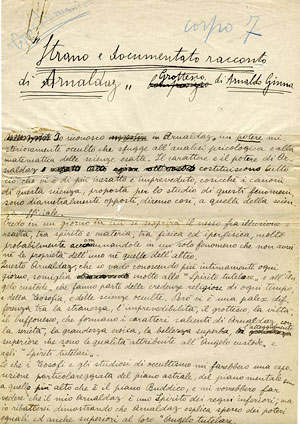Short stories and comedies
During his formative years, Arnaldo Ginna carried out both study and research work along with his brother Bruno Corra and it is during this intellectual osmosis that the latter took on the role of writer and man of letters, while Ginna was exclusively interested in figurative arts.
In his adulthood, after joining the Futurist Movement and moving to Florence, Ginna began writing in literary magazines such as Il Centauro and Rivista di arte e vita and then for the most part in Italia Futurista, the magazine founded by Corra and later, also directed by Ginna himself.

Besides signing theoretical and critical texts, his signature appeared on his first works of fiction and short compositions written in the fragmented imaginative style typical of early 20th century literature.
It is important to note that right from the start, his writing is characterised by visionary aspects, including ironic and pre-surreal ones. His first short stories already contained fantasy and visionary settings that are characterised by uncanny characters: anthropomorphised animals or men with animal features and likeness, set in a childlike, grotesque world with symbolic and surreal aspects .

In 1919, the Facchi publishing house in Milan, directed by Maria Crisi Ginanni, Arnaldo’s first wife, published a collection of short stories by Ginna, some of which had already been printed in the pages of Italia Futurista, with the title Le locomotive con le calze. This work contains illustrations made by Ginna himself and Rosa Rosà, and was considered a surrealist novel in its own right. It is divided into thirteen chapters and is based on a series of free associations that overlap one another in a strange succession of remarkable situations, characterised by a distinct narrative dynamism that nearly made one think of film sequences. Ginna’s interest in theatre and the birth of the Futurist Synthetic Theatre is the cue for writing some theatrical syntheses or Synthetic Experimental Comedies, for example, short situations of a few scenes that contain very rapid changes, in which, time and again, symbolic characters convey states of the mind and soul, that are aided by the director’s notes and great attention is paid to the use of light and colour on stage. Unfortunately, we do not know whether these works were ever performed on stage.
His literary production continued throughout his artistic career. During the 1920s and 1930s, Ginna continued to publish short stories and plays in magazines and newspapers such as L’Impero, Oggi e Domani and Futurismo. In addition to the actual narratives, however, there are also personalised news articles and critical essays that in certain instances, Ginna turns into short stories, narrating facts and events in direct speech enriched with ironic, grotesque and surreal detail so that the articles become true narrative.
Even during the years of his departure from public life, Ginna continued his activity as a writer, albeit in the intimacy of his studio, giving more space to internalization, psychology and religious themes.
In the final period of the 1960s and 1970s, the revival of the futurist theme was manifested not only in painting, but also in literature, as well as in the production and publication of new writings, and in the reissue of Le locomotive con le calze for Edizioni del Pesce d’Oro in 1976.

Text by Lucia Collarile.
